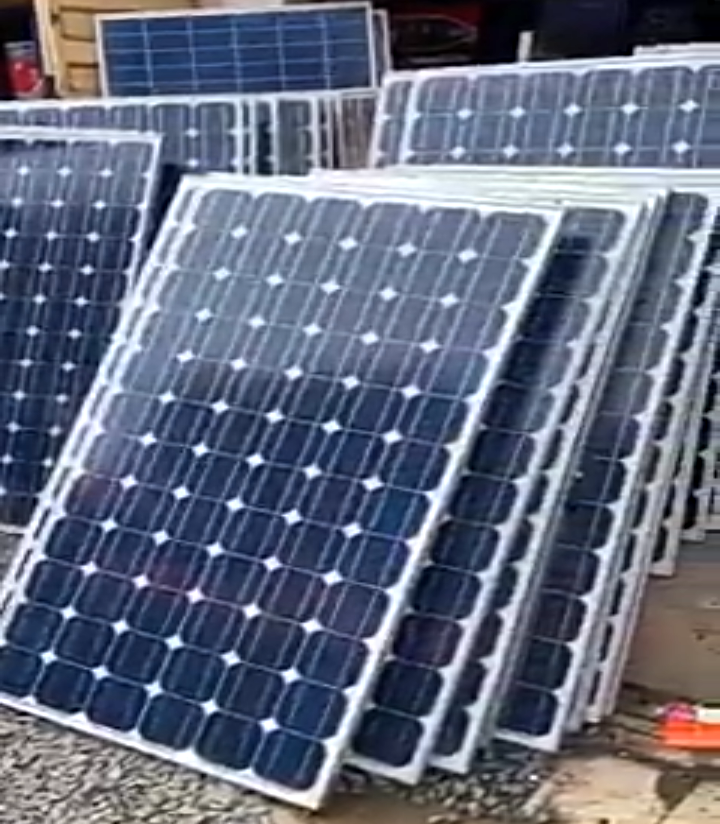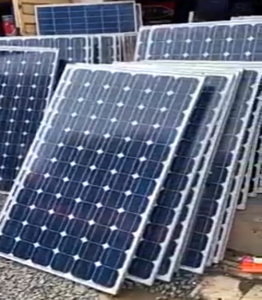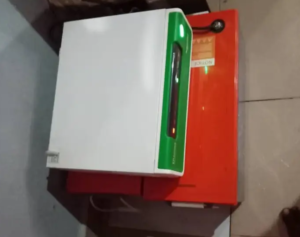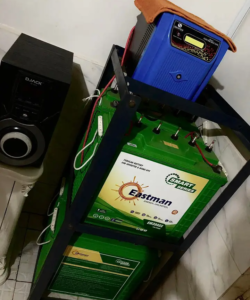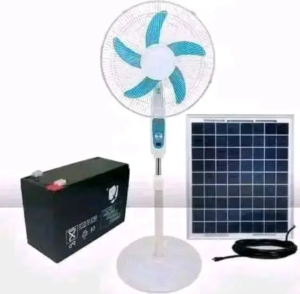As we become more conscious of our impact on the environment, we’re looking for ways to reduce our carbon footprint. One way to do this is by using renewable energy sources like solar power or inverters. While both technologies can reduce our reliance on fossil fuels, they differ in their approach and have their own unique benefits. With solar panels, you can harness the power of the sun to generate electricity for your home, while inverters convert direct current (DC) power from batteries into alternating current (AC) power that can be used in your home. In this blog post, we’ll explain the differences between solar and inverters to help you determine which one is right for you. From cost and efficiency to installation and maintenance, we’ll cover all the important factors to consider when making your decision.
Basic understanding: Solar power and inverter
Before diving into the decision-making process of choosing between solar power and inverters, it’s essential to understand the basics of each technology. Both solar power and inverters play crucial roles in harnessing and utilizing renewable energy, but they serve different purposes.
Solar power refers to the process of converting sunlight into electricity using photovoltaic (PV) panels. These panels consist of multiple solar cells that generate direct current (DC) electricity when exposed to sunlight. The generated DC electricity is then converted into alternating current (AC) electricity, which can be used to power household appliances, lighting systems, and other electrical devices.
On the other hand, inverters are devices that convert DC electricity into AC electricity. While solar panels produce DC electricity, most household appliances and electrical grids operate on AC electricity. Inverters bridge this gap by converting the DC electricity generated by solar panels into the usable AC electricity required by our homes and businesses.
Differences between solar power and inverter
Understanding the differences between solar power and inverters is crucial when it comes to making the right choice for your energy needs.
Solar power refers to harnessing energy from the sun and converting it into usable electricity. It involves the installation of solar panels that capture sunlight and convert it into direct current (DC) electricity. This DC electricity then goes through an inverter, which converts it into alternating current (AC) electricity that can be used to power your home or business.
On the other hand, inverters are devices that convert DC electricity into AC electricity. They are an essential component of any solar power system as they enable the conversion of solar energy into a usable form. Inverters come in different types, such as string inverters, microinverters, and power optimizers, each with its own advantages and considerations.
One key difference between solar power and inverters is that solar power is the overall system that includes the solar panels, inverters, and other necessary components. Inverters, on the other hand, are specifically responsible for the conversion of DC to AC electricity.
Another difference lies in their functionalities. While solar power systems generate electricity from the sun, inverters are responsible for converting that electricity into a form that can be used by your appliances and devices.
Additionally, inverters play a crucial role in monitoring the performance of your solar power system. They provide real-time data on energy production, allowing you to track the efficiency and performance of your system.
When deciding between solar power and inverters, it’s essential to consider factors such as your energy needs, available space for solar panels, budget, and any specific requirements you may have. Consulting with a solar energy professional can help you determine the best solution for your unique circumstances.
Solar: Harnessing energy from the sun
Solar power is a renewable energy source that has gained significant popularity in recent years. Harnessing energy from the sun, solar power offers numerous benefits for both individuals and the environment.
The process of harnessing solar power begins with the installation of solar panels, also known as photovoltaic (PV) panels, on rooftops or open spaces where they can receive direct sunlight. These panels consist of numerous solar cells, which are made of semiconducting material, typically silicon.
When sunlight strikes these solar cells, it excites the electrons within the silicon atoms, creating an electric current. This current is then captured and converted into usable electricity through an inverter, which converts the direct current (DC) produced by the solar panels into alternating current (AC) that can be used to power homes, businesses, and other electrical devices.
One of the key advantages of solar power is its ability to generate electricity without emitting harmful greenhouse gases. Unlike traditional energy sources that rely on fossil fuels, solar power is clean and sustainable. By harnessing energy from the sun, you can significantly reduce your carbon footprint and contribute to a greener future.
In addition to environmental benefits, solar power can also provide financial advantages. Installing solar panels allows homeowners to generate their own electricity, reducing their reliance on the grid and potentially lowering their energy bills. Moreover, in some regions, excess electricity generated from solar panels can be sold back to the grid, providing an additional source of income.
However, it’s important to note that solar power may not be suitable for every situation. Factors such as the availability of sunlight, the size and orientation of your roof, and local regulations can impact the feasibility and effectiveness of solar panel installations. It’s crucial to conduct a thorough evaluation and consult with solar energy professionals to determine if solar power is the right choice for your specific needs.
Benefits and limitations of solar power
Solar power has gained significant popularity in recent years as a renewable and sustainable energy source. Understanding the benefits and limitations of solar power is crucial when considering whether it is the right choice for your energy needs.
One of the most significant advantages of solar power is its environmental friendliness. Solar energy is renewable, meaning it can be continuously harnessed without depleting natural resources. By utilizing solar power, you can significantly reduce your carbon footprint and contribute to a greener future.
Another benefit of solar power is its potential for cost savings. While the initial investment in solar panels may seem expensive, the long-term savings can be substantial. By generating your own electricity through solar power, you can reduce or eliminate your reliance on grid electricity, resulting in lower energy bills over time.
Solar power also offers energy independence. With solar panels installed on your property, you can generate your own electricity and become less dependent on the fluctuating prices and availability of grid electricity. This can provide peace of mind, especially during power outages or times of high demand when grid electricity may be limited.
However, it’s important to consider the limitations of solar power as well. One of the primary limitations is its reliance on sunlight. Solar panels require sunlight to generate electricity, which means their efficiency may be reduced during cloudy days or in regions with limited sunlight. Additionally, solar panels occupy space, either on rooftops or in open areas, which may be a consideration for those with limited space.
Furthermore, the initial installation cost of solar panels can be a barrier for some individuals or businesses. While long-term savings can outweigh the initial investment, it’s essential to evaluate your budget and financial resources before committing to solar power.
Inverter: Transforming DC to AC power
Inverters play a crucial role in the solar energy system, as they are responsible for transforming the direct current (DC) power generated by solar panels into alternating current (AC) power that can be used to power our homes and businesses.
When sunlight hits the solar panels, they generate DC electricity. However, most of our electrical appliances and devices run on AC power. This is where the inverter steps in, converting the DC power into AC power that can be used to run our lights, appliances, and other electrical loads.
Inverters are available in various types and sizes to accommodate different solar system setups and power requirements. The two main types of inverters commonly used in solar installations are string inverters and microinverters.
String inverters are the traditional and most commonly used type of inverter. They are installed in a central location and are connected to multiple solar panels through a series of strings. These inverters convert the combined DC power from all the panels into AC power.
On the other hand, microinverters are smaller inverters that are attached to each individual solar panel. Unlike string inverters, microinverters work independently, converting the DC power from each panel into AC power. This allows for greater flexibility, as shading or issues with one panel do not affect the performance of the entire system.
Choosing the right type of inverter for your solar system depends on various factors, such as the size of the system, the layout of your roof, and your specific energy needs. It is important to consult with a solar professional who can assess your requirements and recommend the most suitable inverter for your needs.
Advantages and disadvantages of using inverters
Using inverters as an alternative energy source has become increasingly popular in recent years. In this section, we will explore the advantages and disadvantages of using inverters, helping you determine if this option is right for you.
Advantages of using inverters:
1. Cost-effectiveness: Inverters are generally more affordable compared to installing a full solar panel system. They provide a cost-effective solution for those who want to reduce their energy consumption without breaking the bank.
2. Flexibility: Inverters can be easily installed and connected to your existing electrical system. They are adaptable to various power sources, allowing you to generate electricity from different sources such as batteries or generators.
3. Portability: Inverters are portable, making them ideal for those who frequently move or travel. You can easily take them with you and use them to power your devices or appliances wherever you go, providing a convenient and reliable source of energy.
4. Backup power: Inverters equipped with battery storage can act as backup power during outages. This ensures that essential appliances or devices can still function, offering peace of mind during unforeseen circumstances.
Disadvantages of using inverters:
1. Limited power capacity: Inverters have a limited power output compared to solar panels. They may not be suitable for powering high-energy-consuming appliances or running an entire household solely on inverter-generated electricity.
2. Dependency on external power sources: Inverters require external power sources such as batteries or generators to supply electricity. This means that if these sources are not available or not functioning properly, the inverter may not be able to provide the desired power output.
3. Environmental impact: While inverters themselves do not emit harmful greenhouse gases, they still rely on power sources that may contribute to environmental pollution. If the external power sources used with inverters are not eco-friendly, the overall environmental impact may not be significantly reduced.
4. Maintenance and lifespan: Inverters, like any other electrical equipment, require regular maintenance and may have a limited lifespan. It is important to factor in the costs and efforts associated with maintenance when considering the long-term viability of using inverters.
Determining your energy needs and requirements
When it comes to choosing between solar panels and inverters, it’s crucial to determine your specific energy needs and requirements. This step is essential in ensuring that you make the right decision for your unique situation.
Start by assessing your current energy consumption. Take a look at your electricity bills and analyze your average monthly usage. This will give you a baseline understanding of how much energy you typically consume.
Next, consider any future changes or expansions in your energy requirements. Are you planning to add new appliances or devices that will consume additional electricity? Are you expecting an increase in occupancy or a change in lifestyle that may impact your energy usage?
Additionally, think about your long-term goals and objectives. Are you aiming for complete energy independence? Do you want to reduce your carbon footprint and contribute to a more sustainable future? Understanding your motivations will help guide your decision-making process.
Finally, consider your budget and financial resources. Solar panels and inverters vary in cost, and it’s important to align your energy needs with your available financial means. While solar panels may provide long-term savings on electricity bills, inverters may offer a more affordable initial investment.
Factors to consider when choosing between solar power and inverters
When deciding between solar power and inverters, there are several important factors to consider. Firstly, it’s crucial to evaluate your energy needs and goals. Are you looking to reduce your carbon footprint, save on electricity bills, or achieve energy independence? Understanding your objectives will help determine whether solar power or inverters are the right fit for you.
Secondly, consider the cost implications. Solar power systems typically involve a higher upfront investment, as they require the installation of solar panels and associated equipment. In contrast, inverters are generally more affordable and can be easily integrated into existing electrical systems. Assessing your budget and long-term financial goals will aid in making an informed decision.
Another aspect to consider is the availability of sunlight in your location. Solar power heavily relies on sunlight to generate electricity, so areas with ample sunlight throughout the year are ideal for solar installations. Alternatively, if your location experiences frequent power outages or unreliable grid electricity, inverters with battery backup could be a more practical choice.
Additionally, assess the space available for installation. Solar panels require a significant amount of roof or ground space, which may not be feasible for everyone. Inverters, on the other hand, are compact and can be easily installed in smaller spaces.
Moreover, evaluate the maintenance and longevity of the system. Solar power systems have minimal maintenance requirements, with solar panels typically lasting for 25 years or more. Inverters may require occasional maintenance or replacement, depending on the specific model.
Lastly, consider any regulatory or incentive programs available in your area. Some regions offer subsidies, tax credits, or net metering programs that can make solar power more financially advantageous. Researching the incentives and policies in your locality can help determine the overall cost-effectiveness of both options.
Taking these factors into account will assist you in making an informed decision between solar power and inverters, ensuring that you choose the option that aligns with your energy needs, budget, space constraints, and environmental objectives.
